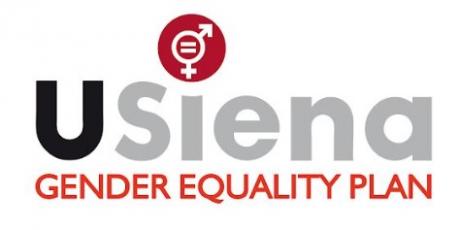The 5 Thematic Areas identified at European level represent the framework within which the University has developed the specific objectives of the GEP. These areas are flanked by a cross-section focused on a widespread communication plan that can support the adoption and development of the GEP as a periodic and shared programming tool and that facilitates the dissemination of services and activities now consolidated in the University but not widely known.
For a more specific description of single objectives, please refer to the extended version of USiena GEP document, which can be downloaded on this same page.
- 0. Visibility of actions, services, resources
0.1. Setting up a dynamic GEP sharing and scheduling process
0.2. Enhancing initiatives, services, University resources already active in support of gender balance and make the outputs of the GEP known to all stakeholders
- 1. Work-life balance and organizational culture
1.1. Facilitate the reconciliation of the private life commitments of teachers on parental leave, with the departmental teaching calendars
1.2. Extension of tools and services called "Career Alias" at present and provided for students in gender transition to the whole academic community
1.3. To oversee the implementation of the "Guidelines for an inclusive institutional administrative language" approved in 2021
1.4. To adapt and improve the logistics of all university common areas to communication and services which are attentive to the gender perspective
1.5. Implementation of web conferencing services to improve work, research and study flexibility and optimize travel between different venues of the University
- 2. Gender balance in leadership and process
2.1. To increase the presence of women in decision-making processes (commissions, bodies, committees, delegations, candidacies, etc.)
- 3. Gender equality in recruitment and career progression
3.1 To standardize the regulatory indications relating to the respect of gender balance in the composition of selection committees
3.2 To build an integrated gender data collection system that can allow periodic monitoring with a view to equity
3.3 To identify financial planning and reporting resources for gender balance ("gender budgeting")
3.4. Enhancement with a "reward" value those Departments that reduce their gender gap in relation to recruitment and career progression
- 4. Gender mainstreaming in research and teaching content
4.1. To promote and train people for the integration of the sex/gender dimension in Research projects and methodologies
4.2. To strengthen connection initiatives between research/entrepreneurship from a gender perspective
4.3. To promote of access to STEM disciplines and, more generally, to female leadership, for high school students
4.4. To map and keep track at institutional level of actions aimed at citizenship and of connection initiatives with other bodies, including international ones
4.5. To train the entire academic community to integrate LGBTQI+ issues into educational paths and university life
- 5. Measures against gender-based violence, including sexual harassment
5.1 To adapt the University Codes to the ILO Convention of 2019 and to the national law 4/2021 on violence and harassment in the world of work
5.2 To activate a system of integrated territorial services to support victims of violence and harassment in the world of work
5.3 To enhance the importance of the topic, through specific prizes, graduate, or PhD theses on the issues of combating gender-based violence and other forms of discrimination
 The University
The University Teaching
Teaching Research
Research International
International